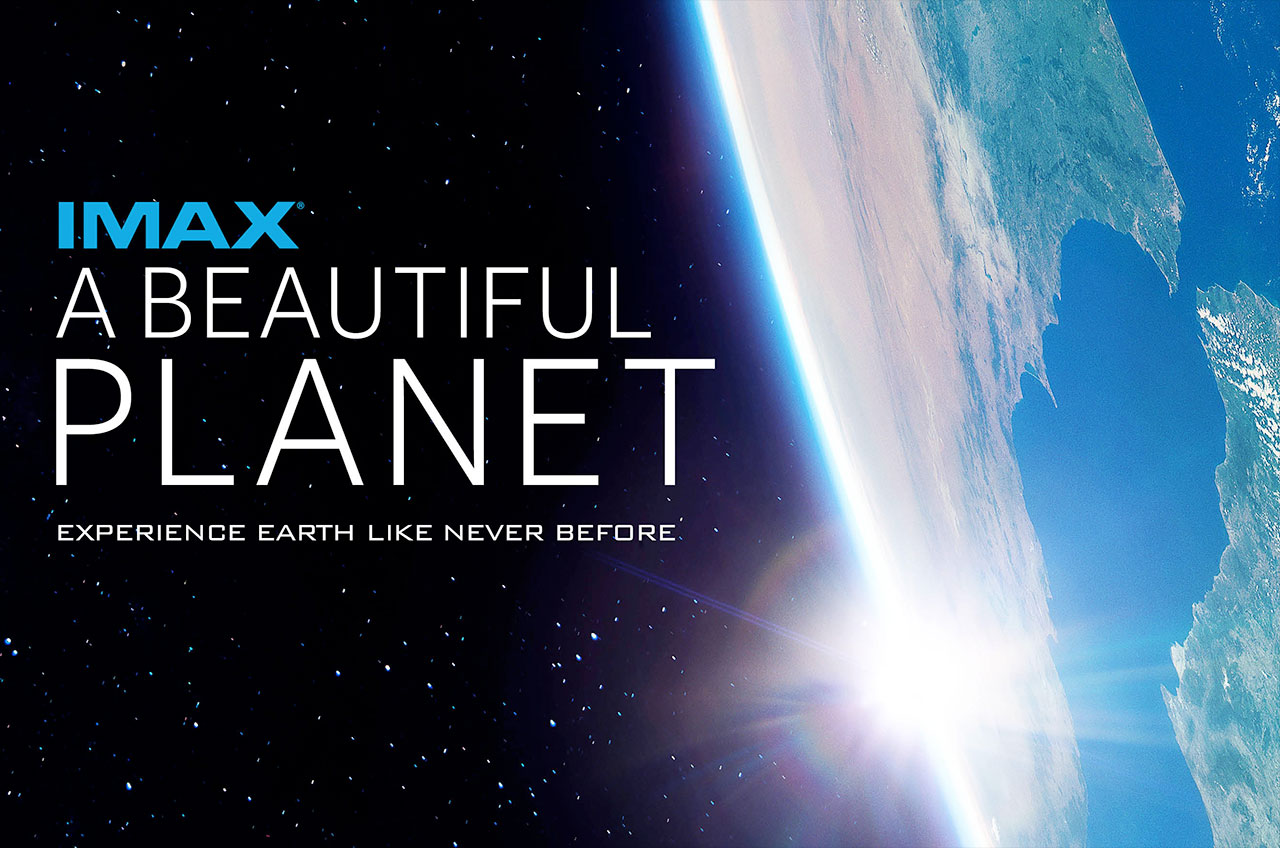I recently had the opportunity to watch a brand new IMAX feature, called A Beautiful Planet. It features incredible views of the Earth from space, captured by astronauts aboard the International Space Station. Most of the footage was taken during Expedition 42 on the ISS, starting with the arrival of Samantha Cristoforetti, Terry Virts, and Anton Shkaplerov aboard the Soyuz TMA-15M, and ending with their departure.
Much of the film was focused on the views of Earth, the scenic diversity of life and land that can only be seen from space. It was difficult to see the effects of humans during the day time, but at night, the lights of cities were clearly visible in the night, showing just how much of the planet is covered by our civilization.
There was a secondary focus on the effect that humans are having on the planet. Images were captured of the dwindling rainforests, and vast columns of smoke from logging industries. A computer-generated flight over a lake showed a change from the rich Earth to the barren landscape of Mars, and a warning of what our planet could soon become.
Some of the most incredible images were of thunderstorms, showing how lightning strikes the planet an average of 200 times per minute, while Terry Virts recalls his first time seeing one. It really gave a perspective on the immensity of hurricanes to see the Eye surrounded by a swirling cloud hundreds of kilometers long.
It truly was an awe-inspiring experience to see this film, the first entirely digital IMAX production. Without any way to return heavy film to Earth without fear of damage, each frame was digitally beamed 400 Km below. And it had to be shot on a smaller camera due to the space restrictions. Yet the imaging technology held on to create an immersive and engaging experience.
My only beef with the entire film was that in all of the glorious images of the Earth, the narration by actress Jennifer Lawrence never made reference to the thin layer of atmosphere visible in the images, the only separation between the warm comfort of Earth and the dark vacuum of Space. There it was, easily visible several times during the film, yet even with the discussions of the fragility of the planet, not one mention of the thin protective layer.
All in all, I enjoyed the film very much. We live in an amazing time, where only in the last 50 years has our species been able to see our planet and gain the new perspective of fragility. It’s like the Earth seeing itself through our eyes, along the vein of the idea that ‘we are the universe trying to understand itself.’
The most important message was also one of the common perspectives shared by astronauts aboard the ISS. The feeling of connection with the entire planet. The view that Earth is no more that a grand space ship. Sam Cristoforetti said herself in the documentary that we “have to think of ourselves as crew,” and not as passengers of space ship Earth.


Thanks for the review Ryan! You’ve piqued my intrigue and motivated me to go check out this experience.
Glad to help my friend! Thanks for reading!